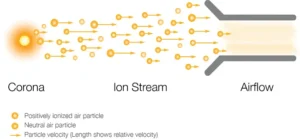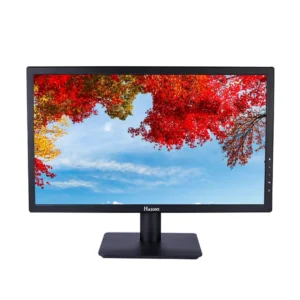Computer Cooling: The Ultimate Guide to Keep Your System Frosty
Proper computer cooling is essential for any PC, from high-powered gaming rigs to basic office workstations. An overheated computer can lead to system crashes, component damage, and poor performance. In this comprehensive guide, we’ll explore everything you need to know about keeping your computer cool and running smoothly.
Understanding the Importance of Computer Cooling
Heat is the natural byproduct of your computer’s operation. As your components work, they generate heat that must be dissipated to prevent overheating. Excessive heat buildup will cause your computer to thermal throttle, reducing performance to protect your hardware. In extreme cases, heat can permanently damage components like the CPU and GPU.

Effective cooling solutions are critical to maintaining your system’s health and performance. With the right cooling methods, you can avoid throttling, maximize overclocking headroom, and extend your hardware’s lifespan. Read on to learn about the fundamentals of PC cooling and how to keep your rig icy cold!
Now, understanding this concept is simple and entertaining for Hasons. Using the Hasons website you can always stay one step ahead in your job, business, or studies by purchasing New Age Desktops and i3 Intel Core Processor Desktop starting from 15000/-. Monitors, CPUs, and Gaming Desktop are also available. Register on Hasons and order your Tech Partner Now. Get exciting offers and benefits on your every purchase. Contact us so our support team can guide you in purchasing the right Tech Partner.
Hasons Nova Pro
22-Inch Ips Monitor | Hasons With 1920*1080 Px
The Basics of Computer Cooling
Computer cooling relies on the principles of heat transfer. Thermal energy from your components spreads to the surrounding air and materials. Fans accelerate airflow to exhaust this hot air from your case and draw in cool air. Heatsinks made of conductive metals like aluminum and copper absorb and distribute heat away from hot spots.
There are two primary types of cooling solutions:
Air Cooling vs. Liquid Cooling
Air Cooling: Keeping It Cool with Fans
Air cooling uses fans and heatsinks to remove heat through airflow. This traditional approach offers excellent performance for most PCs with basic graphics cards and CPUs. Air coolers are generally cheaper and easier to install than liquid options.
Fans mounted in the case, CPU heatsink, and GPU heatsink generate directed airflow to efficiently collect heat and vent it out. Multiple large fans create strong pressure gradients to maximize airflow. Heatsinks provide a large surface area for heat dissipation from hot components to the surrounding air.
Liquid Cooling: Efficient Heat Dissipation with Water
Liquid coolers pump water or coolant via a closed loop system through a water block mounted to hot components like the CPU and GPU. The liquid absorbs the heat which is then transferred to a radiator and dissipated through fans.
Water has a far higher heat capacity than air, making liquid cooling extremely effective at heat removal. Liquid cooling shines under demanding loads like extreme overclocking, multi-GPU setups, and compact builds with limited airflow. Custom liquid loops allow for detailed fine-tuning and aesthetics.
Factors Affecting Computer Cooling Performance
Many variables influence the effectiveness of your computer’s cooling system. Understanding these factors will help you make upgrades tailored for your specific setup.
CPU Cooling: Tackling the Heart of Your System
Your processor (CPU) is one of the hottest components in your PC. Effective CPU cooling ensures optimal thermals and prevents throttling.
Thermal Paste: The Unsung Hero
Thermal paste or thermal compound fills microscopic air gaps between the CPU and heatsink to facilitate maximum heat transfer. Applying a high-quality paste like Arctic Silver 5 properly can lower CPU temps by upwards of 20°C!
Heat Sinks: Dispersing Heat Effectively
The CPU heatsink draws heat away from the processor using conductive metal fins and heat pipes. Larger heatsinks with more fins and pipes provide more surface area for dissipating heat into the air stream.

Fans: Maximizing Airflow for Optimal Computer Cooling
Fans mounted on the CPU heatsink generate directed airflow over the fins to remove heat. High static pressure fans work best for heatsinks. Fan speed and CFM ratings directly impact computer cooling capacity.
GPU Cooling: Keeping Graphics Cards in Check
Graphics processing units (GPUs) require substantial cooling to perform under load. Insufficient GPU cooling can throttle performance during gaming and media tasks.

Heat Spreaders: Cooling Solutions for Graphics Powerhouses
Heat spreaders made of aluminum or copper transfer heat from the GPU chip to heatsink fins. This allows heat to rapidly dissipate from the GPU core.
Fan Configurations: Balancing Performance and Noise
Fans situated over GPU heatsinks exhaust heat from the card. Multiple fans in push/pull configurations optimize airflow and cooling. But more fans increase noise levels, so balance computer cooling needs with noise tolerance.
Case Cooling: Ensuring a Well-Ventilated System
Case airflow is crucial for maintaining healthy temperatures across all components. Good cable management and optimal fan placement distribute fresh air and expel heat.
Case Fans: The Backbone of Airflow
Mounted case fans generate pressure gradients that drive airflow through the chassis. Intake and exhaust fans work in concert to direct cool air over components while venting warm air out.
Optimal Placement and Fan Orientation
Strategic fan placement eliminates hotspots. Position intakes at the bottom and front to feed cool air to GPUs and CPUs. Exhaust fans at the rear and top vent heat. Setting intake and exhaust fans to spin in opposite directions reduces turbulence.
Cable Management: Reducing Obstructions
Good cable management improves airflow by preventing messy cables from blocking intake paths and heatsinks. Use zip ties to route cables out of the way and tie them down.
Advanced Cooling Techniques
For extreme Computer cooling needs, PC enthusiasts can explore advanced methods like overclocking, liquid nitrogen cooling, and thermoelectric cooling solutions.
Overclocking: Pushing the Limits with Computer Cooling
Overclocking increases component speeds and power draw, necessitating more robust cooling to match. High-end air and liquid cooling lets you overclock further by keeping temperatures in check even under heavy loads.
Liquid Nitrogen Cooling: Extreme Cooling for Extreme Performance
Liquid nitrogen (LN2) cooling uses the ultra-low temperature (-196°C) of liquid nitrogen to provide radical cooling for record-breaking overclocks. However, LN2 is costly and requires expert handling.
Phase Change Cooling: Taking Cooling to the Next Level
Phase change units use compressors and evaporators to cycle coolant between liquid and gas states, offering superior cooling. But they are complex to set up and maintain.
Peltier Cooling: Harnessing Thermoelectric Power
Peltier coolers use thermoelectric plates that get cold on one side when electricity is applied, providing solid spot cooling. But they are relatively inefficient for whole system cooling.
Maintenance and Troubleshooting
Like any complex system, computer cooling setups require proper maintenance and troubleshooting when issues arise. Follow these tips for keeping your computer’s cooling in top shape.
Cleaning: Preventing Dust Buildup and Blockage
Regularly cleaning dust buildup on computer fans, heatsink fins, and filters improves cooling by allowing proper airflow and heat dissipation. Use compressed air, lint-free cloths, and filtered vacuum attachments.
Troubleshooting: Diagnosing Computer Cooling Issues
If you suspect cooling problems, start by monitoring temperatures with software like Core Temp and GPU-Z while running intensive tasks. Check fans for operation and dust buildup. Reapply thermal paste between the CPU and heatsink if temps are high. Make sure all coolers are mounted properly with even contact pressure. Increase fan speeds or upgrade computer cooling components like fans and heatsinks if necessary.
Monitoring Software: Keeping an Eye on Temperatures
Use temperature monitoring software like HW Monitor to track component temps in real time or log them for analysis. Monitoring temps helps identify cooling issues and benchmarks cooling upgrades.
Common Cooling Problems and Solutions
High temperatures, unexpected throttling, system crashes, and fan failures point to cooling issues. Check for loose cooler mounts, dust buildup, poor cable management, or poor fan placement. Upgrading fans, heatsinks, thermal paste, and switching to liquid cooling can remedy more serious cooling deficiencies.
Future Trends in Computer Cooling
Innovations in cooling technologies and methods offer even more effective and efficient ways to keep future computers cool.
Advances in Computer Cooling Technologies
Emerging cooling techs like thermoelectric coolers, nanofluids, and advanced design heat pipes promise to enhance heat dissipation and allow for specialized cooling solutions. AI-assisted automated control systems will dynamically optimize cooling performance.
Sustainable Cooling Solutions
Environmentally friendly and energy efficient cooling techniques are on the horizon. Natural coolants like CO2 are being adopted in place of damaging refrigerants used in some liquid cooling setups. Companies are exploring applications like geothermal-based cooling for data centers.
Integrating Cooling with System Design
Rather than treating it as an afterthought, cooling is becoming an integral part of the system design process. New 3D chip stacking techniques embed microfluidic cooling layers and advanced heat conduction solutions right into the chip package.
Electrostatic Air Movement and Corona Discharge Effect Cooling
Electrostatic air movement and corona discharge effect cooling are innovative cooling techniques that leverage the principles of electrostatics to move and cool air within a computer system. These methods offer potential advantages over traditional fan-based cooling solutions, including reduced noise levels, improved energy efficiency, and the ability to target specific areas for cooling.

Electrostatic air movement involves the use of high-voltage electrodes to create an electrostatic field within the computer enclosure. This field induces a charge on the surrounding air molecules, causing them to be attracted or repelled by the electrodes, resulting in air movement. By strategically positioning the electrodes, airflow can be directed towards specific components or areas that require cooling.
The corona discharge effect is a phenomenon that occurs when a high-voltage electrode ionizes the surrounding air, creating a plasma-like region called a corona discharge. This ionized air has a higher thermal conductivity than regular air, allowing for more efficient heat transfer from the components to the surrounding environment.
Combining electrostatic air movement and the corona discharge effect can create a highly efficient cooling system that operates silently and with minimal energy consumption. These techniques can be particularly useful in applications where noise levels and energy efficiency are critical, such as in data centers or specialized computing environments.
Conclusion on Computer Cooling
From air cooling basics to cutting edge liquid cooling methods, mastering PC thermal management provides tangible benefits. Lower temperatures prevent throttling to boost fps in games and speed up rendering tasks. Dialing in the optimal cooling setup extends the lifespan of precious hardware. And effective cooling opens the door for overclocking and benchmark-shattering performance. We hope this guide gives you the foundation to make your PC run cool as a cucumber!
| If you are reading Computer Cooling then also check our other blogs: | |
| Difference between Desktop and Monitor | 16 GB RAM Desktop |
| Future Computer | Types of computer |
Computer cooling FAQ
- Why is computer cooling important?Computer cooling is critical because heat can damage components like CPUs and GPUs, cause crashes, and throttle performance. Effective cooling maintains safe operating temperatures.
- What are the different types of computer cooling methods?The main types are air cooling using heatsinks and fans, and liquid cooling with a water cooling loop and radiator. Advanced methods include thermoelectric coolers and ultra-low temperature liquids like nitrogen.
- Which is better, air cooling or liquid cooling?Air cooling is simpler and cheaper, but liquid cooling is more efficient at heat removal. Liquid cooling excels at cooling overclocked systems and compact builds. Air cooling is adequate for most standard builds.
- How can I improve CPU cooling?Upgrading your CPU heatsink and fan, adding more case fans, properly applying thermal paste, and ensuring clear airflow pathways around the heatsink will improve CPU cooling.
- How can I cool down my computer?Clean dust buildup from heatsinks and fans, add more case fans, ensure proper airflow and cable management, replace stock coolers with superior aftermarket coolers, and upgrade to liquid cooling for the best cooling capacity.

